Introduction
The demand for herbs in the production of traditional medicines is ever increasing. In Malaysia, according to the Malaysian Industry-Government Group for High Technology or MIGHT, the value of herbal related products is more than RM 4.5 billion a year in 2005 and was expected to achieve a growth rate of 10 to 15% per annum.[1] At present, less than 10% the raw materials used in the production of traditional medicines are cultivated locally. The rest are either imported from overseas or collected from the wild. Over-dependence on imported raw materials will expose the local industry to inconsistent supply, price instability and adulteration with low quality materials. This will hamper the growth of the Malaysian herbal industry, and will also result in the outflow of foreign exchange.
The practice of collecting herbs from the wild for the commercial production of traditional medicines will at some stage in the future endanger the existence of these species. The only way to prevent the growing demand for these herbal medicines from endangering herb species is to plant these herbs commercially. In order to make sure that these herbs can be grown commercially without losing their medicinal properties, good understanding of the growth requirements of these crops is important. These include the understanding of their natural growth habitat, collection techniques, propagation of the planting materials, harvesting and post harvest handling of the herbs.
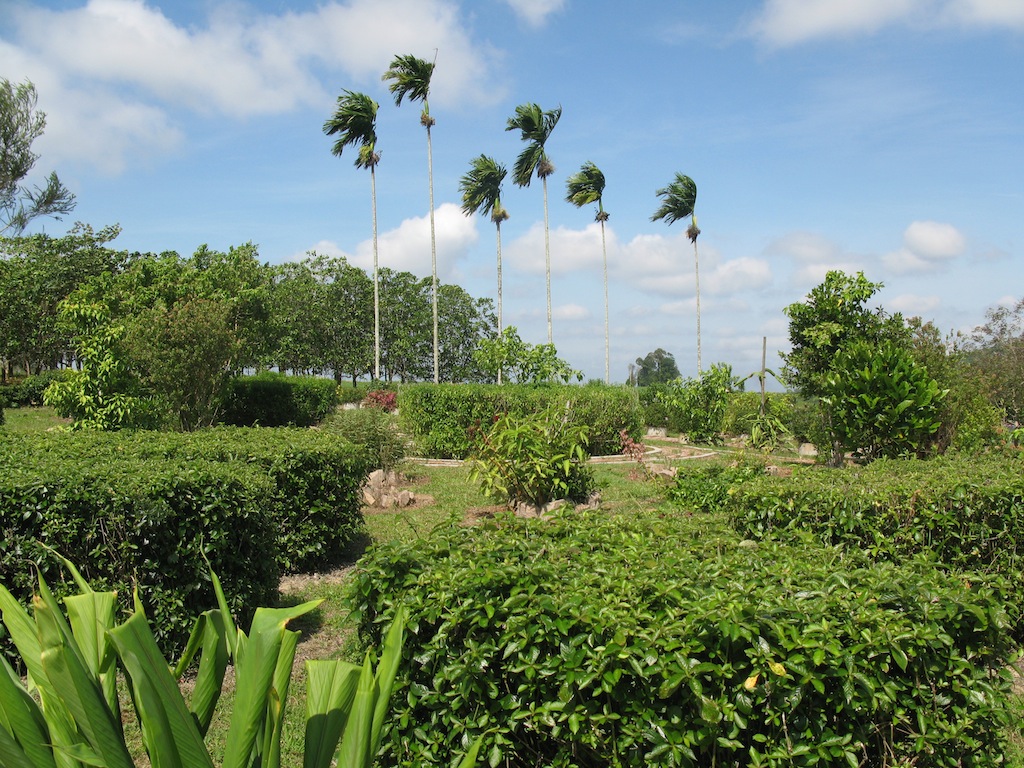
Crop growth requirements
All the herb species have their own growth requirements, and thus have very specific preferred ecological zones. This is related to the temperature of the growing environment, available moisture, intensity of sunlight and carbon dioxide levels. This combination of factors will determine the survival of the species, and also the specific phytochemicals present in each species. There are herbs that require lower day and night temperatures, and thus are only found at higher elevations. There are others that are found only at lower elevations. Some require shade, and thus grow as undergrowth plants in the forest. Others require full sunlight, and thus are generally found in open areas, by the roadsides or idle land.
Collection of medicinal plants
The collection of herbs from their natural habitat is made for different purposes. Some are collected by professional collectors. These raw materials are then supplied to the local herbal industry, or to be used for herbal preparations by small-scale herbal practitioners. Some herbs are also collected for planting materials for home gardeners and commercial nurseries.
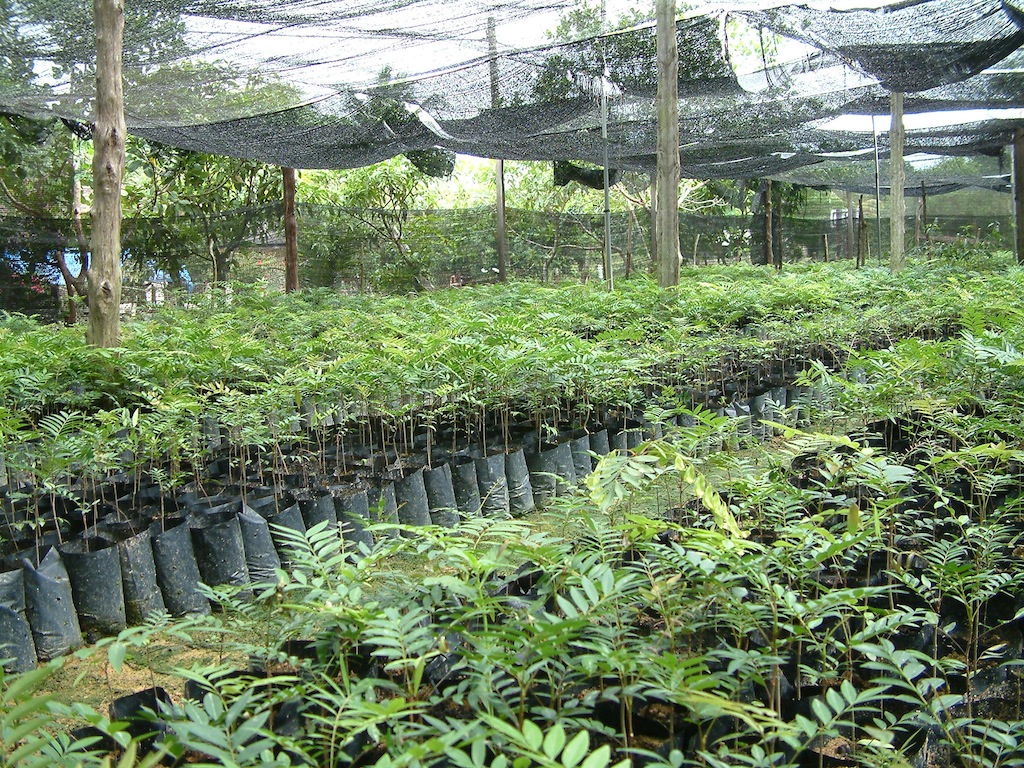
If the plants collected and harvested are used for medicinal purposes, a few other factors should be considered. These include the physiological growth stage, planting season, time of harvest and harvesting method. These factors could influence the biochemical constituents and thus the medicinal properties of the herbs. General guidelines for the collection of plants for medicinal purposes are given in the Table 1.
Table 1. General guidelines of harvesting different plant parts[2]
| Plant part to be collected | Harvest stage |
| Whole plant or aerial parts | At initial flowering |
| Roots or rhizomes | At full maturity . The maturity stage of the species must first be determined. |
| Leaves | When the leaves are fully developed. |
| Steam or bank | At the beginning of the rainy season. |
| Wood | Towards the end of rainy season. |
| Flowers | At the begining of the blooming period. |
| Fruit | When fully matured |
| Seed | When the fruit are fully matured. |
On top of all this, it is important to note that the collectors of medicinal plants adopt the following general guidelines: First, the plants to be collected should be healthy and free from mechanical injury, diseases and pests. If the flowers are to be used, they should be collected when they are starting to bloom. In the case of roots, they should be harvested from mature and fully grown plants. The right time to collect leaves is after a flush of new shoots and leaves. The fruit on the other hand are picked only when they are fully matured.[2][3]
Propagation of planting materials
Basic understanding of plant propagation techniques is important to ensure the availability of a large quantity of quality materials at the shortest time possible. The technique to be used depends on the herb species itself. Some herbs can be easily grown from the readily available seeds. For some herbs, the seeds need special treatments to make sure that uniform, quality seedlings are produced. Vegetative propagation techniques using shoot cuttings, rhizomes, tubers or stolons (suckers) can be applied to some herbs.
Herbs like ‘hempedu bumi’, ‘dukung anak’, ‘senamaki’, ‘mengkudu’ and ‘tongkat ali’ can easily be propagated by using seeds. Stem cuttings can be used for ‘misai kucing’ and ‘mas cotek’. Root cuttings were found to be the best material for propagation of ‘kacip fatimah’, while rhizomes, stolons or suckers are used as planting materials for herbs like ginger, turmeric, ‘pandan’ (screwpine), ‘pegaga’ (pennywort) and their related species. Besides the choice of the propagation materials to be used, the correct potting medium is also important to ensure either the seeds or cuttings to be used are able to grow and produce good and healthy seedlings or plants. If the planting of these herbs is to be mechanised, some modifications need to be done to suit available machineries. These include the use of the suitable seed and planting trays and potting media as well as establishing the suitable size of the seedlings.[1]
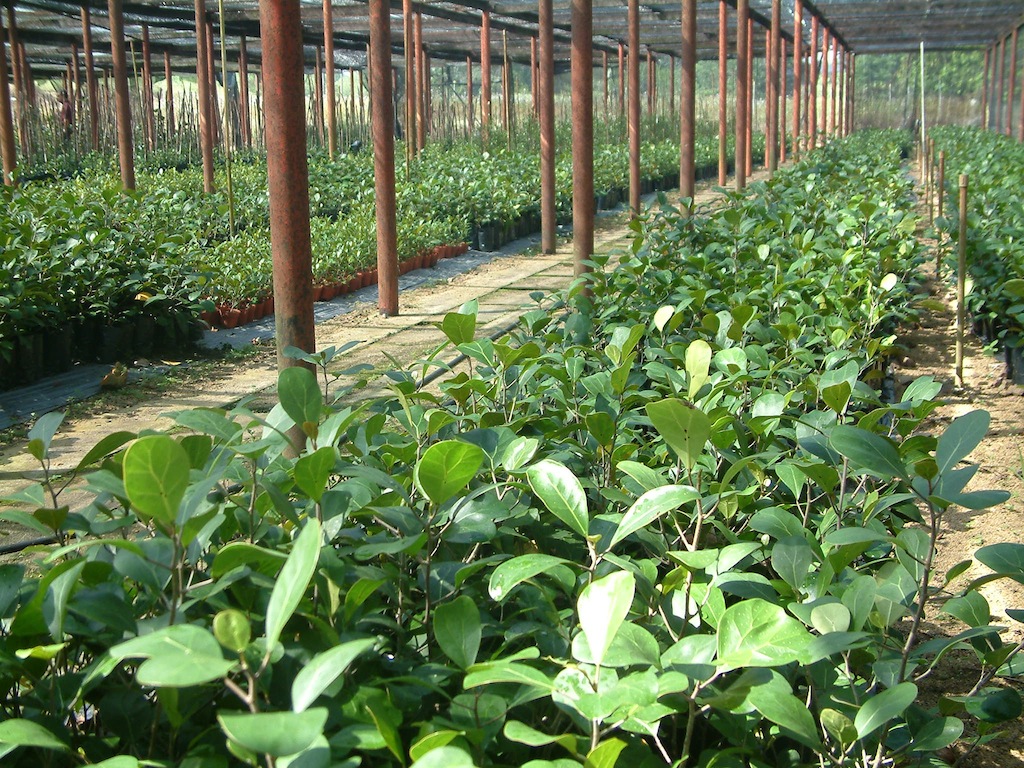
Commercial production system
Herbs can be planted and produced under a number of production systems. These include monocropping in the open field, agro-forestry production systems (virgin forests, forest plantations and cleared forests), and integration with established tree crops like oil palm and rubber. However the selection of herbs to be grown under different production system is important. Herbs like ‘kacip fatimah’ require a certain amount of shade for optimum growth. Thus, they can be planted either as an intercrop with established commercial tree crops, or planted in agro-forestry production systems. Citronella, ginger, turmeric and ‘temu’, however, grow better in open field production systems.
The agronomic requirements of these herbs are no different from other established commercial crops. The basic agronomic requirements are correct fertilisation, water management, cultural practices and pest management. However, in order to ensure that the plants grow in environments closest to their natural conditions, some concept of biodynamics or organic farming should be practiced. This includes the use of the right non-chemical fertilisers and management of pests and diseases. The main aim of organic farming is to improve the inherent qualities of the herbs produced. In herb production, we are dealing with minute quantities of the phytochemical/s or essential oils available in the plants. In organic farming, only organic fertilisers such as compost, animal dung or organic- based commercial fertilisers should be used. Bio-pesticides are used to control insect pests. For optimum growth, proper irrigation systems should be established. Among the systems that can be used are sprinkler, drip-tape, micro jet and furrow irrigation.[2][4][5][6][7]
Post harvest handling of herbs
Post harvest handling of herbs is another important aspect in the production of raw materials for the commercial traditional medicine producers. First, they must make sure that the maximum potential of the medicinal properties of the herbs is maintained throughout the process of harvesting, drying and storage. Harvesting should be done at the right physiological stage. For example, ‘hempedu bumi’ should be harvested just before the plants start flowering. At this stage, the andrographolide content is at its peak. For ‘misai kucing’, young shoots measuring 10-20 cm from the tip should be harvested.
Traditionally, the herbs that are produced by Malay herbalists are either air- or sun-dried. These methods are generally used for drying chips of ‘tongkat ali’ and ‘ubi jaga’, as well as the leaves of ‘mas cotek’, ‘dukung anak’ and ‘kayu manis’. However, for commercial production, it is necessary to have drying facilities to ensure a continuous supply of raw materials. Whatever drying system is available and in use, it is important to note that the drying temperature should not exceed 40oC. Drying at temperatures greater than 40oC will destabilise the bioactive chemical components, and thus the inherent medicinal properties will be compromised. The harvested materials should be properly dried to make sure they can be stored without fungal infection. For an ideal storage condition, the moisture content of the dried herbs should be less than 10%.[2][4]
Another important aspect of the post harvest handling of herbs is to ensure that the raw materials are free from contamination by foreign materials such as weeds and inert materials such as sand and soil.[2][4]
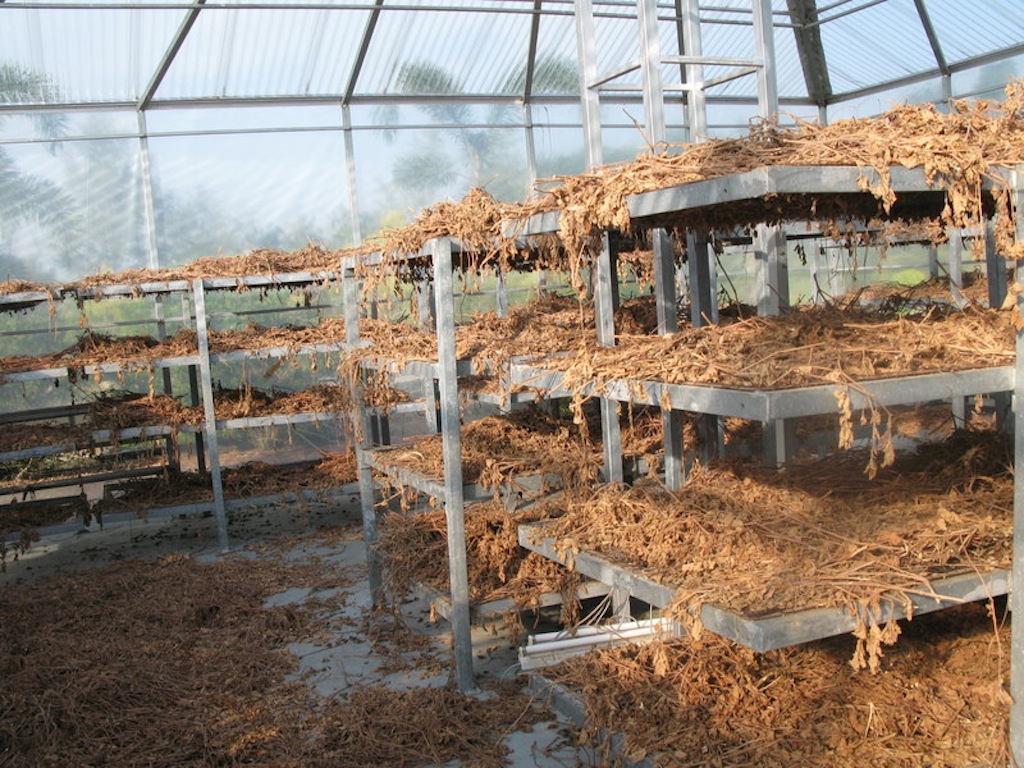
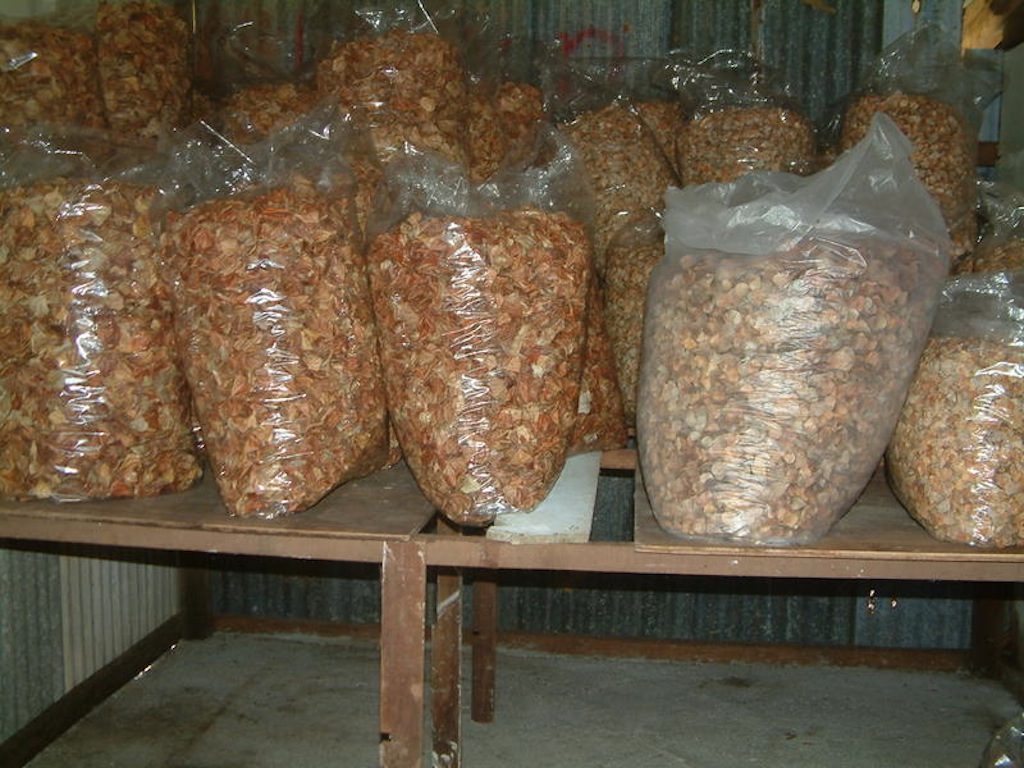
References
- Anon. 2009. Speech by YB Dato’ Liow Tiong Lai
- Minister of Health, Malaysia at the launch of The 3rd Global Bio-Herbs Economic Forum at Palace Of The Golden Horses Saturday, 12 December 2009
- Musa, Y. Azimah, K. and Zaharah, H. 2009. Tumbuhan Ubatan Popular Malaysia. Serdang : MARDI
- Musa, Y and Mansor, P. 2009. Amalan baik dalam pengumpulan tumbuhan ubatan. Agromedia 29 (32-33)
- Musa, Y., Muhamad Ghawas, M. and Mansor, P., editor. 2005. Penanaman Tumbuhan Ubatan & Beraroma. Serdang: MARDI.
- Musa, Y and Mansor, P. 2009. Amalan pertanian yang baik : Satu kemestian dalam pengeluaran tumbuhan ubatan berkualiti. Agromedia 29 (34 – 35)
- Musa, Y., Wan Zaki, W.M., Yahaya, H. and Zaharah A 2006. Manual Penanaman Dukung Anak. Serdang: MARDI.
- Zaharah, A., Wan Zaki, W.M., Yahaya, H., and Musa, Y. 2006. Manual Penanaman Hempedu bumi. Serdang: MARDI.


